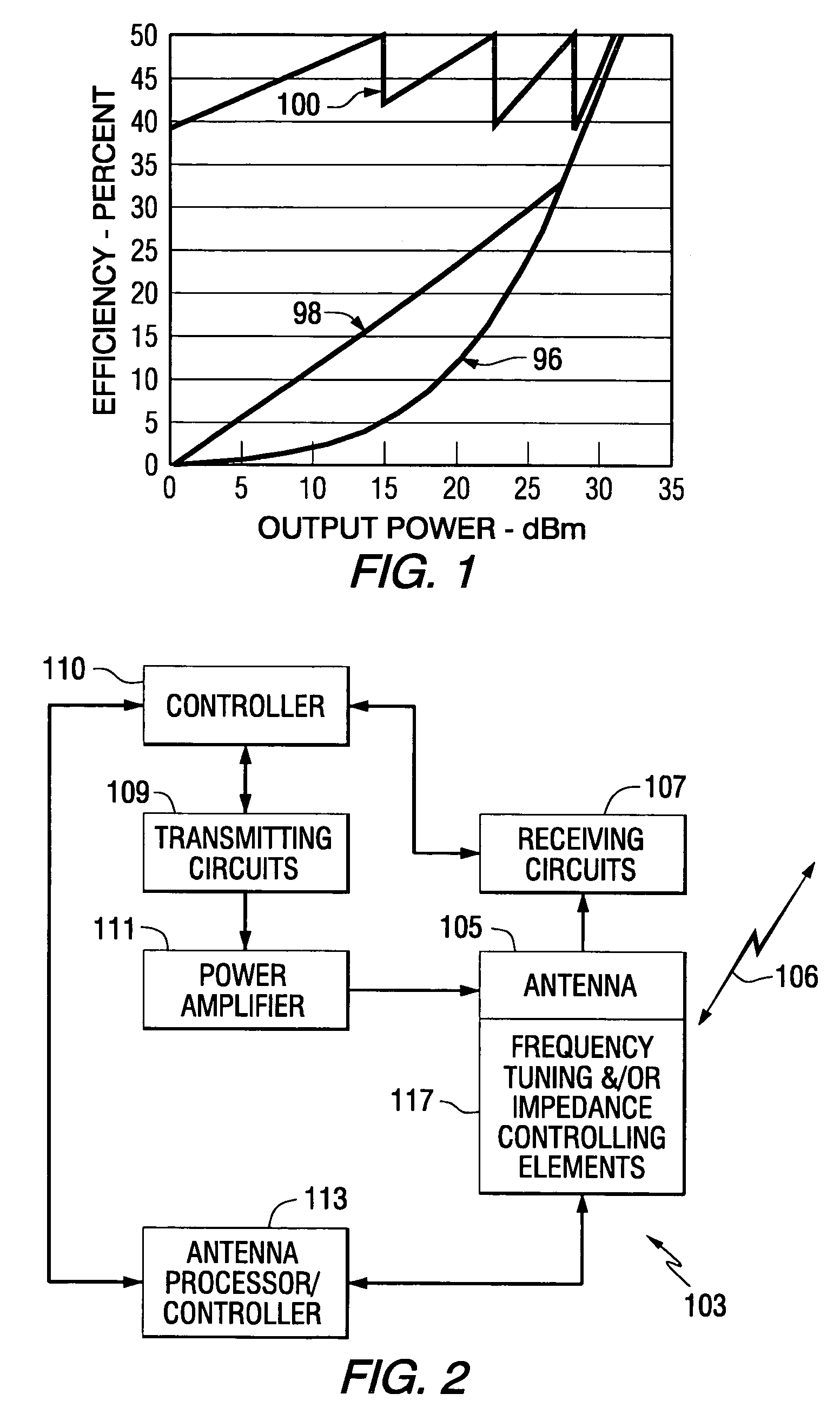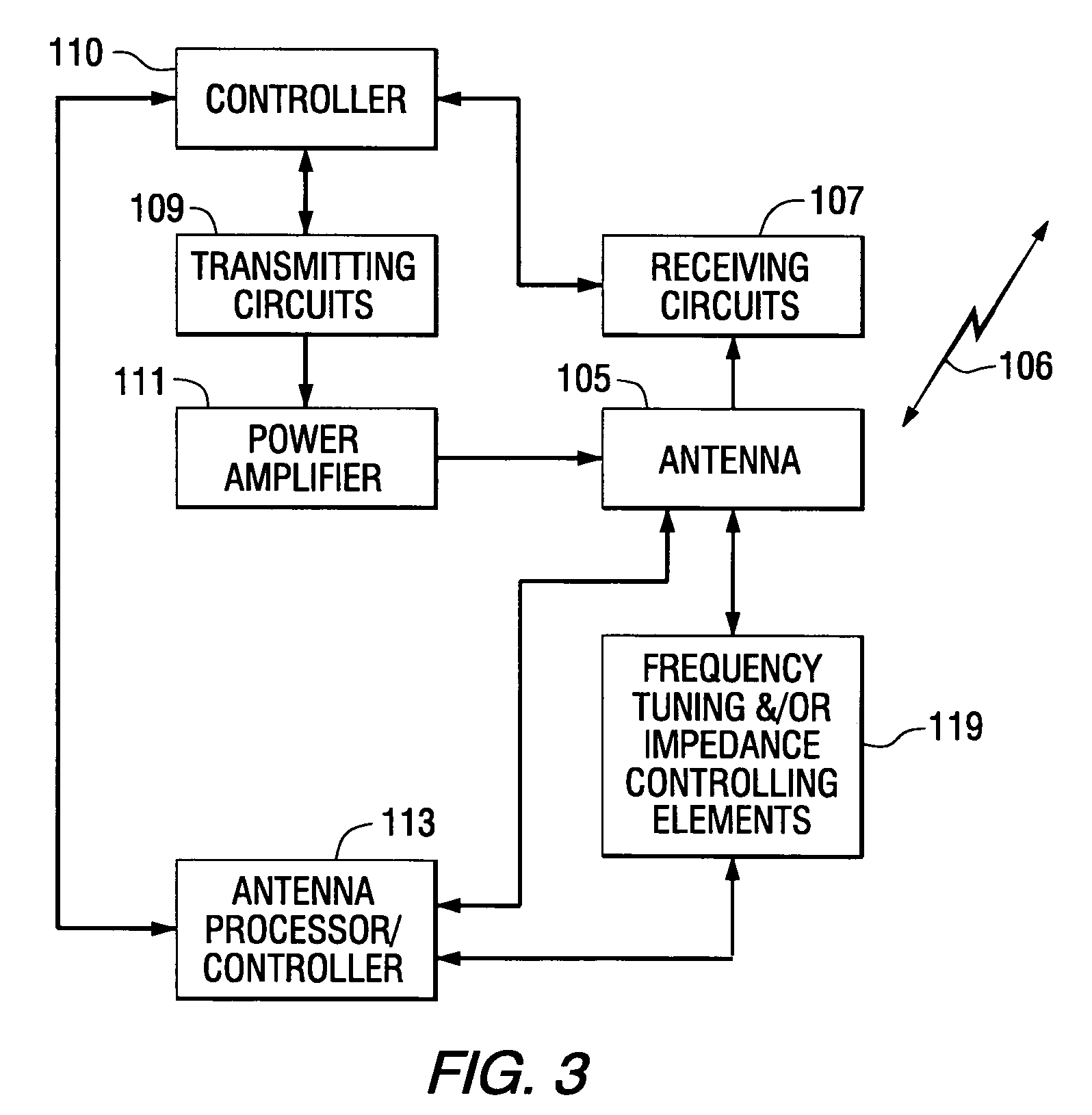Methods and apparatuses for adaptively controlling antenna parameters to enhance efficiency and maintain antenna size compactness
a technology of adaptive control and antenna parameters, which is applied in the direction of resonant antennas, substantially flat resonant elements, transmission, etc., can solve the problems of insufficient space for conventional quarter and half wavelength antenna elements, large antennas, and inability to meet the needs of certain communications devices,
- Summary
- Abstract
- Description
- Claims
- Application Information
AI Technical Summary
Benefits of technology
Problems solved by technology
Method used
Image
Examples
Embodiment Construction
[0044]Before describing in detail the exemplary methods and apparatuses related to controlling antenna structures and operating parameters, it should be observed that the present invention resides primarily in a novel and non-obvious combination of elements and process steps. So as not to obscure the disclosure with details that will be readily apparent to those skilled in the art, certain conventional elements and steps have been presented with lesser detail, while the drawings and the specification describe in greater detail other elements and steps pertinent to understanding the invention.
[0045]The following embodiments are not intended to define limits as to the structure or method of the invention, but only to provide exemplary constructions. The embodiments are permissive rather than mandatory and illustrative rather than exhaustive.
[0046]Antenna tuning control techniques are known in the art to provide multi-band antenna performance for a multi-band communications device. The...
PUM
 Login to View More
Login to View More Abstract
Description
Claims
Application Information
 Login to View More
Login to View More - R&D
- Intellectual Property
- Life Sciences
- Materials
- Tech Scout
- Unparalleled Data Quality
- Higher Quality Content
- 60% Fewer Hallucinations
Browse by: Latest US Patents, China's latest patents, Technical Efficacy Thesaurus, Application Domain, Technology Topic, Popular Technical Reports.
© 2025 PatSnap. All rights reserved.Legal|Privacy policy|Modern Slavery Act Transparency Statement|Sitemap|About US| Contact US: help@patsnap.com



